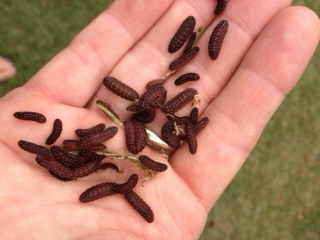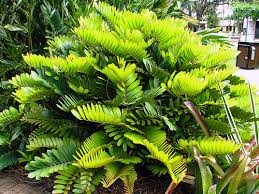If you have Cycad or Cycas revoluta in your garden, it’s that time of year to watch out for the Blue Butterfly!
Spring sees lots of activity in the garden but how much activity is governed by temperatures. With longer Summers and shorter mid seasons the garden is experiences many changes. Depending on how much spring we experience and when things really start to warm up, the hatching of insects can occur earlier in the season then normal. One insect to get prepared for is the Blue Butterfly which takes advantage of the spiky foliage of the Cycad revoluta to lay its eggs. Little brown grubs hatch and are ferocious eaters, causing immense damage to the new shoots that emerge during the warmer months. This perfect timing is nature at it’s best but it is at this time of year when you need to be diligent to offer the best protection.
TREATMENT.

 Alternative Approach.
Alternative Approach.
If the whole process is too labour intensive then consider replacing your Cycad revoluta with another plant species. The Cardboard Palm (Zamia furfuracea) is a great option as this member of the Cycad family is not affected by the Blue Butterfly and they perform equally as well, providing a lush tropical look or formality to a garden when incorporated well.
Image: Zamia furfuracea

